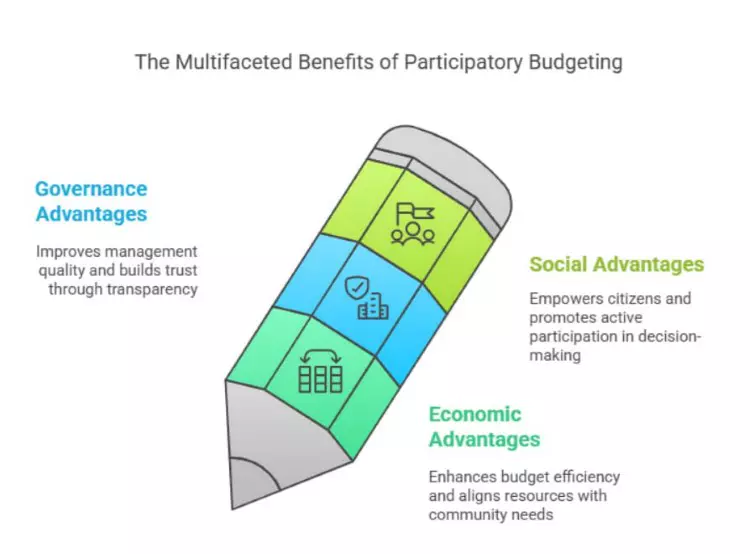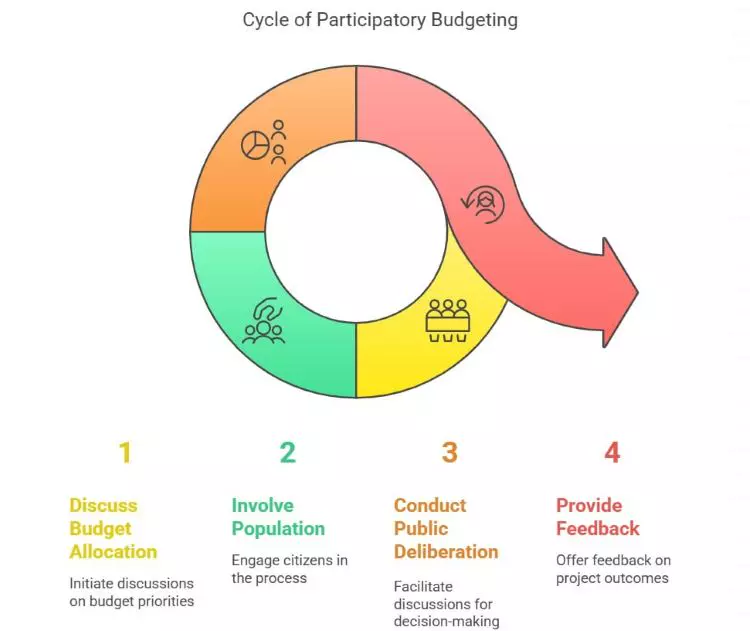Participatory budgeting plays a crucial role in shaping smarter, sustainable cities by directly involving citizens in the decision-making process. This democratic approach not only boosts transparency and accountability but also helps ensure that public funds with local needs and priorities. As cities adopt digital tools and experiment with new forms of civic engagement, the potential of participatory budgeting continues to expand. What does the future hold for participatory budgeting in our cities? And how might new challenges reshape the citizen engagement in local governance?
Historical Roots of Participatory Budgeting
In Brazil, participatory budgeting became a tool to strengthen democracy and improve governance. After 1985, political parties, NGOs, and social movements embraced this practice to boost transparency. The first initiative began in Porto Alegre in 1989, after the Workers’ Party won the mayoral election. Amid financial crisis and bureaucratic chaos, officials tested citizen input to reallocate public spending. Although fewer than 1,000 people participated in the first year, the number rose to 8,000 by 1992. It exceeded 20,000 annually after the party’s re-election, showing PB was seen as a real decision-making tool.
Participatory budgeting spread worldwide as a practice for citizen engagement in urban governance. Its goals vary across countries, reflecting different political and social contexts.
In Brazil, the main aim was to restore trust among disillusioned citizens. Elsewhere, it focuses on fighting poverty through equitable and needs-based resource allocation.
Global Adoption
Over 3,000 participatory budgeting processes now operate worldwide, mostly at the municipal level. This democratic approach transforms traditional budget planning by involving residents in every step—from designing the process and public consultations to proposal submission, evaluation, voting, and implementation. Cities such as Espoo, Chicago, Lahti, and Warsaw have adopted PB. In Paris, €100 million is allocated to this process each year. Introduced by Mayor Anne Hidalgo in 2014, the initiative engaged over 40,000 citizens in its first online vote on 15 proposals. By 2016, participation grew to 150,000 residents selecting 219 projects, with special allocations for deprived areas and youth initiatives.
In the United States, participatory budgeting has delivered tangible improvements in community infrastructure and services. For example, Durham, NC, allocated $2.4 million across three city wards to fund youth centers, crisis centers, and education centers. Philadelphia directs $1 million to capital projects, while Richmond, VA, reserves at least $3 million per year for community-led improvements over five years. Oakland, CA, uses federal Community Development Block Grant funds to support community gardens, youth apprenticeships, and immigrant programs. These initiatives demonstrate how participatory budgeting advances democracy and ensures that public spending meets community needs.

Advantages of Participatory Budgeting
Participatory budgeting lets citizens influence how public funds are spent, enhancing transparency, accountability, and civic engagement. The benefits fall into three categories:
Social: Empowering communities and encouraging active citizenship.
Economic: Improving the efficiency and relevance of budget allocations.
Governance: Strengthening institutional quality and public trust.
Economic Advantages
Participatory budgeting enhances budget spending efficiency by involving citizens in the decision-making process. When citizens are engaged, funds are allocated more effectively, ensuring that resources support projects that yield tangible economic benefits. This approach fosters resource development and strengthens economic control, as local communities can identify their needs and priorities. By aligning budget allocations with community interests, participatory budgeting can lead to improved economic outcomes and a more sustainable use of public funds.
Governance Advantages
The governance aspect of participatory budgeting focuses on improving management quality and bolstering staff competencies and literacy. By encouraging staff rotation and the infusion of fresh perspectives, public administration can adopt innovative practices that enhance transparency and accountability. This process not only empowers public servants but also builds trust between the government and the community. As a result, participatory budgeting contributes to a more effective and responsive governance structure that is better equipped to meet the needs of its citizens.
Social Advantages
Participatory budgeting empowers citizens by educating them about public finances and the decision-making process. This empowerment helps communities rely less on central authority and organize themselves more effectively. By fostering a common public language of communication, participatory budgeting encourages more engaged and proactive citizen participation. As individuals become more informed and involved, they are more likely to advocate for their needs and contribute to the overall well-being of their community.

Local-Level Opportunities for Civic Engagement
Participatory budgeting (PB) offers valuable mechanisms for citizen engagement at the local level, enabling residents to directly influence how public resources are spent. As of 2023, over 4,500 PB processes have been launched across Europe, reflecting the growing interest in co-decision practices between governments and citizens. Municipalities like Aberdeen (2022), which introduced a green PB to allocate for net-zero projects, and Wrocław (2023), focusing on housing, show how thematic PBs can align local spending with strategic urban goals. The variety of formats—municipal, district, regional, and even national, as seen in Portugal—suggests an expanding landscape of participatory tools. These initiatives not only deepen local democracy but also create more responsive and inclusive governance structures.
Investment Gaps and Financial Constraints
Despite its growing popularity, PB remains financially underpowered. Investment levels are generally modest—averaging only 1–2% of municipal budgets. For example, the average PB spending per person in France is around €6,5 (2022), and in Grenoble, the PB fund was increased from €800,000 to €1.8 million between 2022 and 2023, yet remained under 5% of the city’s investment budget. Legal frameworks in different places aim to guarantee baseline PB funding (1% and 2% respectively), but elsewhere, the lack of political commitment or limited municipal resources curtails the scale of participation. This financial obstacle not only restricts the scope of citizen influence but may also erode public trust in the meaningfulness of these processes.
Themes for Future Reflection
First, how can cities increase participation without overburdening citizens or administrators? Digital tools can lower barriers and increase engagement, but they also raise concerns about digital exclusion. Many citizens, especially older adults and low-income groups, may lack the devices, internet connectivity, or digital literacy needed to participate effectively. Ensuring inclusivity in digital PB platforms will require thoughtful design, comprehensive support services, and hybrid models that combine online and offline participation.
Second, can legal frameworks or EU-level mechanisms help provide financial stability for PB, reducing its vulnerability to shifting political will or tight municipal budgets? Institutional backing could help scale PB and reduce disparities in investment across cities and regions, ensuring that participatory budgeting remains a reliable tool for civic engagement despite financial challenges.
Third, how can PB evolve to target structural inequalities and ensure more equitable representation for marginalized groups? Special outreach and tailored processes are needed to involve underrepresented voices—especially in deprived neighborhoods or among youth and minorities, who often face barriers to participation in governance.
As cities confront economic constraints, climate risks, and political fragmentation, participatory budgeting offers a tool for rebuilding trust and resilience in local governance. But achieving this requires digital inclusivity, strong legal support, and a focused effort on social equity, ensuring that all voices are heard and represented.


